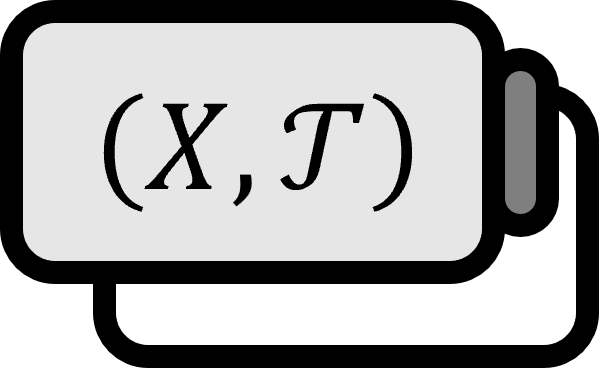Proof of the Adhesive Lemma
Theorem
For a given topological space $X,Y$ and two closed sets $A,B \subset X$ satisfying $A \cup B = X$, let two continuous functions $f : A \to Y$ and $g : B \to Y$ satisfy $f(x) = g(x)$ for all $x \in A \cap B$. Then, the function defined as follows $h$ is a continuous function. $$ h(x) : = \begin{cases} f(x), & x \in A \\ g(x), & x \in B \end{cases} $$
Explanation
The lemma, also called the Gluing Lemma, is so evident from just reading the sentence that its name and proof have remained because it was convenient to give it a name due to its frequent use, and because it was provable.
Proof
To show that $h$ is continuous, consider the closed set $C \subset Y$.
- For all closed sets $C \subset Y$, if $f$ is a continuous function $\iff$, then $f^{-1} (C)$ is a closed set in $X$.](../432)
Since $f$ and $g$ are continuous, $f^{-1}(C)$ is a closed set in $A$ and $g^{-1}(C)$ is a closed set in $B$. Given that $A$ and $B$ are closed sets in $X$, $f^{-1}(C)$ and $g^{-1}(C)$ are also closed sets in $X$. $$ \begin{align*} h^{-1} (C) =& \left\{ x \in X \ | \ h(x) \in C \right\} \\ =& \left\{ x \in A \ | \ h(x) \in C \right\} \cup \left\{ x \in B \ | \ h(x) \in C \right\} \\ =& \left\{ x \in A \ | \ f(x) \in C \right\} \cup \left\{ x \in B \ | \ g(x) \in C \right\} \\ =& f^{-1} (C) \cup g^{-1} (C) \end{align*} $$ is the union of closed sets in $X$, so $h^{-1}(C)$ is a closed set in $X$, and $h$ is a continuous function.
■
Corollary
Let the path $p,q : [0,1] \to X$ satisfy $p(1) = q(0)$. Then, define $p*q : [0,1]$ as follows and call it the Product Path. $$ (p \ast\ q) (t) = \begin{cases} p(2t), & 0 \le t \le 1/2 \\ q(2t-1), & 1/2 \le t \le 1 \end{cases} $$
The product path can be seen as a concept precisely applied at one point by the gluing lemma, and it is usefully employed in the study of path connectivity.
Homotopy
Connecting paths in this manner leads to research into homotopy in Algebraic Topology, and one ends up seeing the gluing lemma over and over again.
